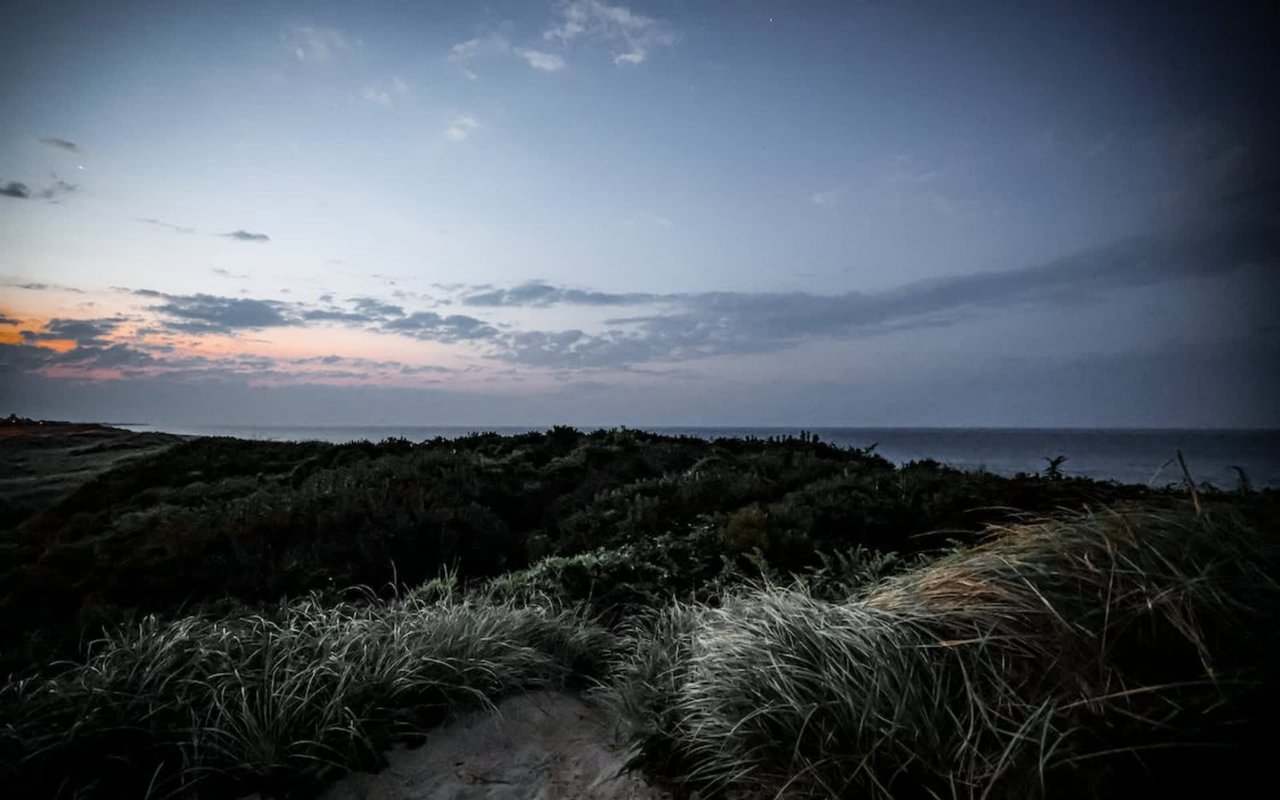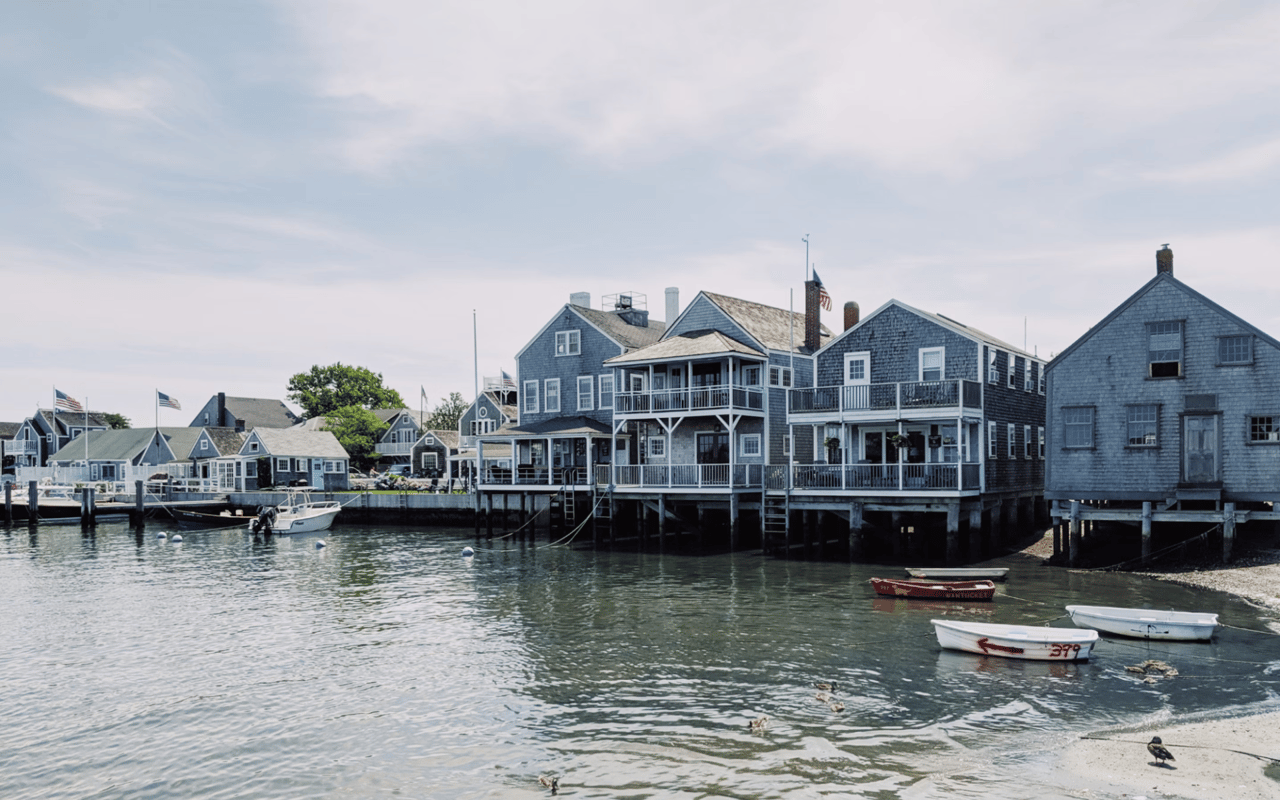Nantucket boasts a network of hiking trails for the more serious and adventurous walker that showcase its gorgeous landscapes, making for a wonderful experience. This guide will take a closer look at some of the island's notable hiking spots, offering explorers a chance to immerse themselves in Nantucket's natural beauty. When you look beyond the tourist hotspots, these trails provide a glimpse into the island's lesser-explored corners, where you can get lost in nature.
Whether you're a seasoned hiker or simply looking for a peaceful escape, Nantucket's hiking trails offer a refreshing alternative to the island's more bustling scenes.
Sconset Bluff Path
Your Nantucket hiking journey begins with the Sconset Bluff Path, a scenic trail that winds along the picturesque bluffs on the eastern shore of Nantucket. This relatively easy 2.01 mile trail, with only a 49 feet elevation gain, offers breathtaking views of the Atlantic Ocean, making it a popular choice for beginners or those looking for a more peaceful hike.
The path takes you through the historic village of ‘Sconset, allowing hikers to appreciate both natural beauty and local architecture. As you traverse the path, you'll encounter well-maintained footpaths and informational markers, enhancing the experience for both seasoned hikers and those seeking a casual outdoor excursion.
Tupancy Links Trail
Tupancy Links, named after Mr. and Mrs. Oswald A. Tupancy who gifted the land, presents another excellent opportunity for hiking in Nantucket. This 0.9-mile looping trail to the north of Cliff Road offers a mix of coastal and woodland scenery, providing a different perspective on the island's landscape. The path promises a quick jaunt and is well-maintained, making it accessible for hikers of various skill levels.
The Tupancy Links trail provides an excellent spot for birdwatching. Benches along the way provide perfect areas for hikers to pause, appreciate the surroundings, and enjoy a peaceful moment out in nature.
The Tupancy Links property on Nantucket Island features a diverse array of plant species and ecological characteristics:
-
Heathland Plants: The area is rich in heathland vegetation, including bearberry (an evergreen ground cover with pink flowers and red berries) and false heather (noted for its yellow flowers). These plants are especially prominent along the trail slopes.
-
Diverse Flora: The trail is home to thickets of bayberry, beach plum, pasture rose, low bush blueberry, and black huckleberry. These plants are vital for local wildlife, providing both food and shelter.
-
Wildlife Habitat: The diverse plant life supports various wildlife, including eastern cottontail rabbits, white-tailed deer, and numerous bird species.
-
Pine Trees: The southern and western edges of the trail feature groves of pitch pine and Japanese black pine. These trees, shaped by strong winds and salt spray, provide a unique aesthetic. However, the non-native Japanese black pine is considered invasive, and efforts are being made to manage their population due to infestation by black turpentine beetles.
-
Erosion and Safety: The trails lead to a bluff approximately 42 feet above sea level, offering stunning views of Nantucket Sound. Due to high erosion rates, visitors are advised to stay behind safety fences and be cautious around steep areas.
-
Scenic Views: From the bluff, one can see various landmarks such as Jetties Beach, Nantucket Harbor, Coatue, Great Point Lighthouse, and the silhouettes of Nantucket Town. The location is also ideal for birdwatching.
-
Visitor Precautions: Poison ivy is prevalent near the paths, requiring visitors to be cautious while exploring away from the official pathway.
Tupancy Links caters to those seeking an easier hiking experience while immersing themselves in Nantucket's scenic splendor.
Masquetuck Reservation
For those seeking a more secluded and serene hiking experience, the Masquetuck Reservation fits the bill. This nature reserve offers a network of trails that meander through woodlands, hardwood forests, salt marshes, and open fields. It's an ideal spot for birdwatching and enjoying the island's native wildlife. The serenity of the Masquetuck Reservation provides a tranquil escape from the hustle and bustle of more frequented areas.
As you explore the undisturbed paths, the reserve's diverse ecosystems reveal themselves, creating an immersive experience for nature enthusiasts. Key features of these ecosystems are:
-
Salt Marsh: Serving as a vital ecosystem, salt marshes on the property are teeming with marine life like mollusks, fish, and crustaceans, crucial for the local food chain. These marshes also play a significant role in absorbing energy from storms, reducing shoreline destruction. Once undervalued, their ecological importance is now recognized and protected by environmental agencies.
-
Bird Habitat: The marshes are a haven for various bird species. Nesting and migratory birds like plovers, yellowlegs, dowitchers, whimbrels, and sanderlings feed on marine organisms in the marsh. American oystercatchers, herons, and egrets are also prevalent, utilizing the area for feeding.
-
Vegetation Zones: The marsh features two distinct zones - the high marsh, inundated during high tides and hosting plants like salt meadow cord grass, and the low marsh, frequently submerged and home to saltmarsh cord grass.
-
Hardwood Forest: Dominated by tall red oak, white oak, black tupelo, red maple, and other trees, these "hidden forests" formed in glacial depressions and are rare on Nantucket. They represent a climax community, indicating a stable and mature ecosystem.
-
Understory and Ground Layer: The forest houses shrubs like high bush blueberry and winterberry, with a ground layer of wintergreen and various ferns. This layered vegetation supports diverse bird species, including chickadees, warblers, and woodpeckers.
-
Freshwater Bog: This area contains Sphagnum mosses, forming peat layers. Adapted to nutrient-poor conditions, plants like leatherleaf and carnivorous sundews thrive here.
-
Maritime Forest and Upland: Bordering West Polpis Harbor, this forested area is surrounded by salt marsh and harbor, offering a unique habitat for observing various waterbirds and shorebirds.
The Masquetuck Reservation is thus a crucial area for conservation, research, and public education, hosting diverse habitats and species.
ACK Coast to Coast Trail
The ACK Coast to Coast Trail, often referred to as the island's "spine," is a remarkable trek that spans from one end of Nantucket to the other. This challenging trail officially covers 24.7 miles, providing hikers with a diverse range of landscapes, from dense woodlands to expansive moors and coastal panoramas. Hikers will navigate through a mix of sand dunes, heathlands, and coastal ecosystems, encountering an array of flora and fauna unique to Nantucket.
One highlight of the ACK Coast to Coast Trail is its panoramic views of Nantucket Sound and the Atlantic Ocean. As you trek along the winding terrain, take a moment to appreciate the unspoiled beauty that surrounds you.
The trail is not for the faint of heart, with an elevation gain of around 1800 feet, but the sense of accomplishment and the breathtaking vistas make it a must-try for avid hikers seeking a challenge.
For those planning to take on this adventure, here are some practical tips:
- Be prepared for all types of weather.
- Bring plenty of water and snacks.
- Wear comfortable shoes and clothing.
- Let someone know where you are going and when you expect to be back.
- Pace yourself to fully enjoy the scenic beauty.
Gardner Forest Meadow and Marsh Meander Trail
The Gardner Forest Meadow and Marsh Meander Trail provides a peaceful escape into the heart of Nantucket's woodlands. Located near the Lost Farm Wildlife Sanctuary, this trail is an oasis of tranquility. The trailhead is easily accessible, located near the Cisco Bike Path. As you begin your journey, you'll find yourself in a dense forest of oak and pine trees.
The Gardner Forest Meadow Trail is a relatively short loop, spanning around 1.5 miles, making it suitable for hikers of all skill levels.
As you navigate the winding paths, keep an eye out for the diverse birdlife and small mammals that call this area home. The trail also opens up to a picturesque meadow, providing a perfect spot for a leisurely picnic or a moment of quiet reflection.
Embracing Nature's Beauty in Nantucket
Nantucket's hiking trails offer an amazing range of experiences, from coastal walks to wooded paths, with the island's natural beauty on full display across these trails. So, lace up your hiking boots and explore the less-traveled corners of Nantucket, where nature and tranquility await.
For those looking for a more leisurely and casual walk, we have some alternative information on the walking paths of Nantucket.
Are you ready to embark on your next adventure of hiking in Nantucket? If you are looking to book a vacation rental or make your move more permanent, talk to Bernadette Meyer to get started.
You can find more information used in this article by visiting the Nantucket Conservation Foundation.




